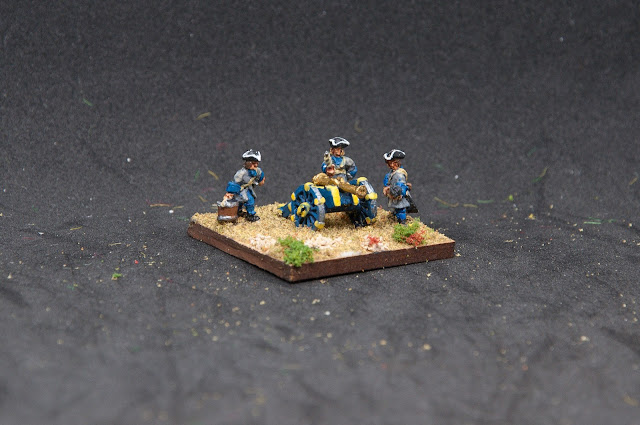Smålands kavalleriregemente and Skånska tremänningsregementet till häst

I've finished up two small units from the second line of the swedish left flank, Smålands kavalleriregemente and Skånska tre- och femmänningsregementet till häst. These are two very different units, Småland being one of the original "indelta"/alloted cavalry regiments raised before the war and was part of the King's army fighting at Kliszów 1702, Pułtusk 1703, Warszawa 1705, Holowczyn 1708, until it was lost at Poltava, and reraised for the defence of Skåne in 1709, and Skånska tre- och femmänningarna one being one of the temporary regiments raised in 1700 by combining three and five rusthåll to set up one extra cavalryman, only participating in one field battle, i.e at Helsingborg. Johan Valentin von Daldorff, the colonel of Smålands, was originally a messenger from the court of duke Friedrich IV of Holstein-Gottorp sent to its ally Sweden with the news of the peace at Travendal, and then took service in the Swedish army. Daldroff avoided capture at Polt






